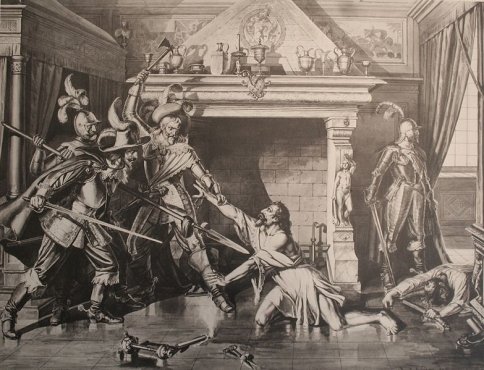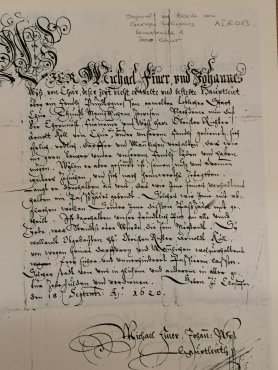The Bünder Wirren (1618 to 1639)
At the beginning of the 17th century, Chur, as a Spanish-minded municipality, was often the scene of unrest, riots and popular uprisings in connection with the factions and foreign military services. In 1607 alone, three criminal courts took place in Chur.
The warlike conflicts between the coalitions of France-Venice and Spain-Austria over the present-day canton of Graubünden during the Thirty Years' War are referred to as the Graubünden Wirren. The main issue was the control of the Graubünden Alpine passes, but also the confessional order in Graubünden.
The real prelude to the Graubünden turmoil was the Valtellina Murder in July 1620, when Italian mercenaries under Knight Giacomo Robustelli invaded the Valtellina and won over the local Catholic ruling class for an uprising against their majority Reformed Graubünden sovereigns. About 500 Protestants were killed and hundreds of members of the Graubünden ruling class fled the Valtellina.
The Graubünden immediately tried to reconquer the Valtellina and moved into it with some regiments via Chiavenna and the Muretto Pass, but were defeated at Morbegno on August 8, 1620.
Now the Graubünden requested support from the Swiss Confederation. The poorly planned campaign ended in defeat at the Battle of Tirano on September 11, 1620, after the sack of Bormio, where the Reformed retaliated for the murder of the Valtellina. Now the Three Confederations were also threatened with dissolution from within. In the fall of 1620, the Spaniards recruited 1500 Catholic mercenaries in central Switzerland and moved them to Reichenau GR to support the Catholic cause in the Grisons and to protect the returned Pompey Planta.
Obrister Richter Köhl Arnold
Arnold Köhl belonged to a Churian ensign, a group of armed Churians who reported to the Zurich envoy, Heinrich Bem. He was appointed by the captains as a judge for an independent court. On September 18, 1620, the two captains of Chur, Michael Finer and Johannes Wyss, issued a pass to the Obrister Judge Köhl Arnold,[12] probably in order to be able to attend a court without hindrance. However, he is not mentioned in any other source in this context.
Das Friedensabkommen
On February 6, 1621, deputies of the majority Catholic Grey Confederation concluded a separate peace with Spain in Milan. Although it provided for the return of Veltin and Bormio to the Three Leagues, it gave the Spaniards free right of passage and occupation, including for the Graubünden passes. In addition, the Grey Confederation was prepared to exclude from the confederation the territories of the Three Confederations claimed by Habsburg.
Numerous Reformed families fled from Graubünden and the Veltlin to the Confederation, especially to Zurich and Bern. This allegedly motivated Jörg Jenatsch to assassinate Pompejus Planta, the leader of the Spanish party, at Rietberg Castle in Domleschg on February 25, 1621. Jenatsch had been a Reformed preacher in Berbenno near Sondrio and had narrowly escaped the Valtellina murder with his family[15].
In 1622 a longer foreign occupation of the country began. Chur had to endure an imperial occupation for about ten years. The Spanish soldiers adhered only very loosely to the terms of the occupation treaty, indulged in assaults and brought in the plague.
After the end of the Thirty Years' War, the burghers quickly made up for the losses they had suffered. Thus, in 1665, it decided to grant citizenship and subsequently opened it only to a few wealthy aspirants. From the 17th century onwards, despite various requests for expulsion, the backwoodsmen constantly made up about half of the population. After the revocation of the Edict of Nantes in 1685, hundreds of Protestant refugees from Piedmont, Savoy and southern France arrived. They were actively supported, but then mostly pushed on. Those who remained were economically back-bound, as were all of the Hintersassen, but were cared for by their own chaplains[9].
Impressum und rechtliche Hinweise
Sources:
9: Historisches Lexikon der Schweiz, Jürg Simonett , 2020,
12: Passierschein für Oberstrichter ("Obrister Richter") Arnold Köhl, Stadtrat Chur, 1620, StAGR A II/2.0109 / A I/5.013
15: Bündner Wirren, Wikipedia, 2020,
- The guilds of Chur
- The Bünder Wirren (1618 to 1639)
- The butcher's door and its guardian


